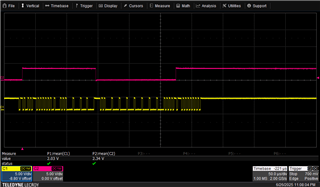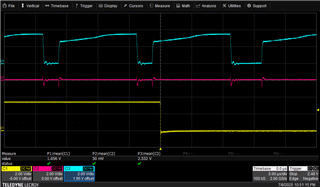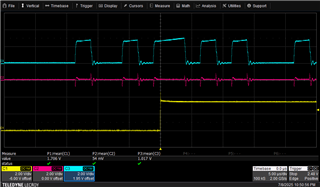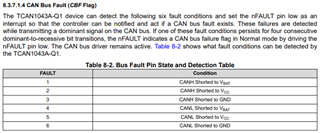Other Parts Discussed in Thread: TCAN1043A-Q1
Tool/software:
We see that the nFAULT pin toggles between 'low' (single wire error) and high (no single wire error) when CAN L is shorted to GND and chip is in NORMAL state. This behaviour is only present when there are longer sequences of recessive bits in the transmitted CANFD frame. Is there a known issue for the fault CANH shorted to GND?







